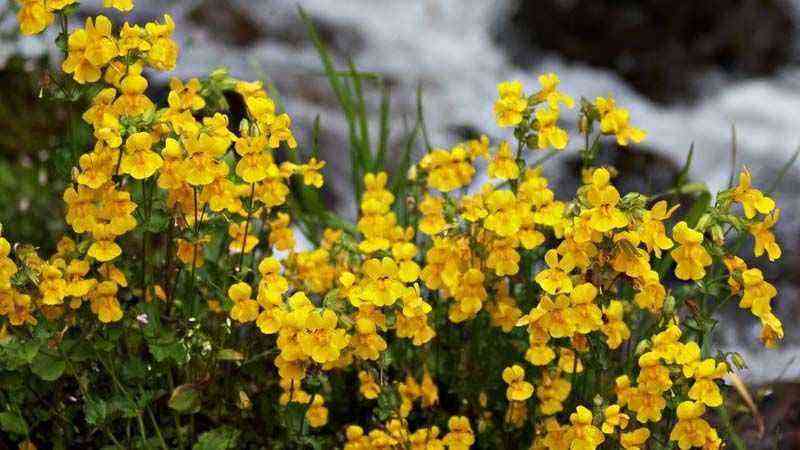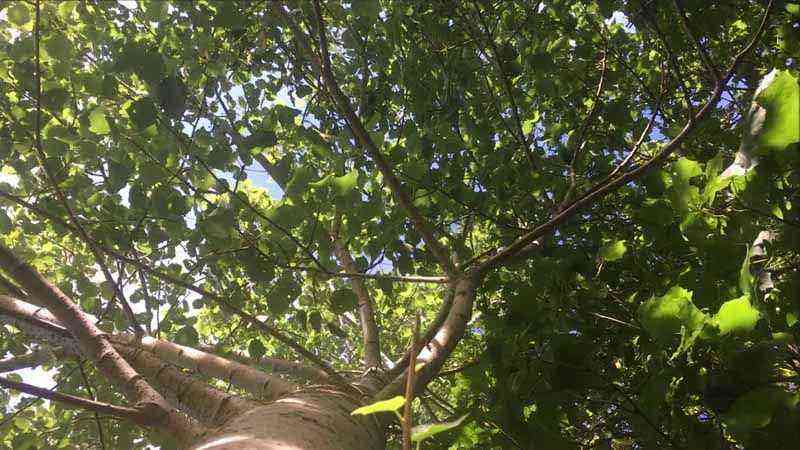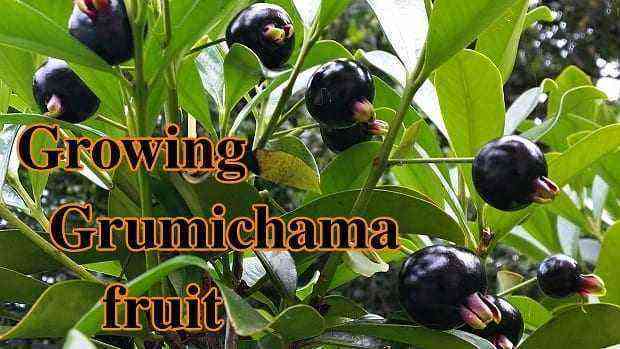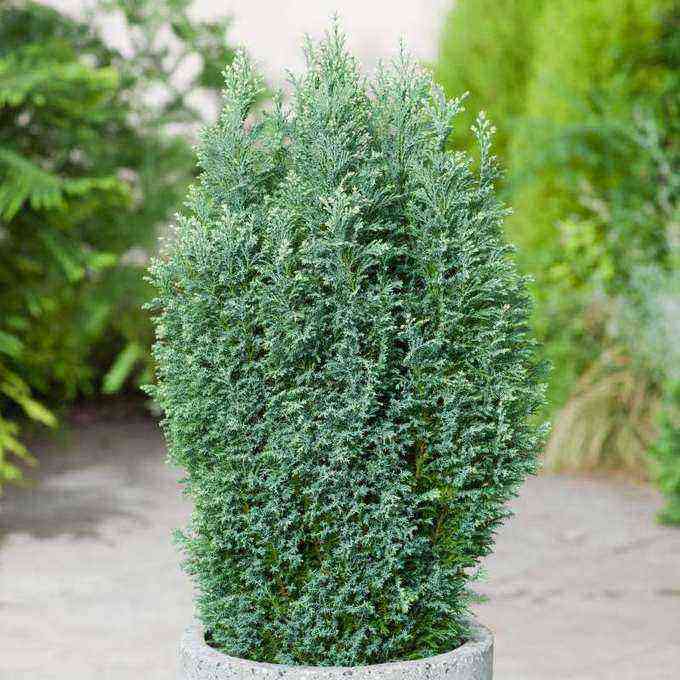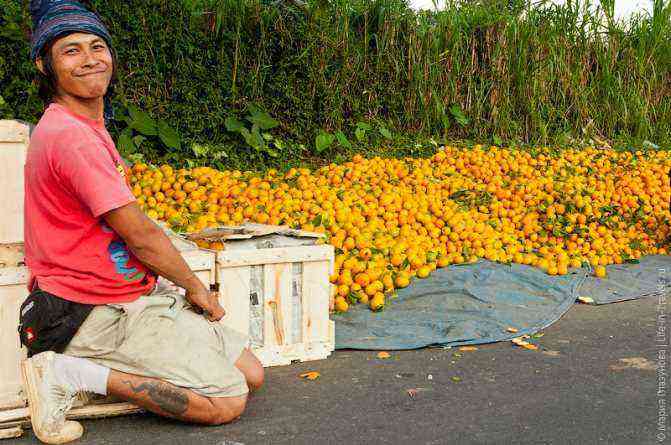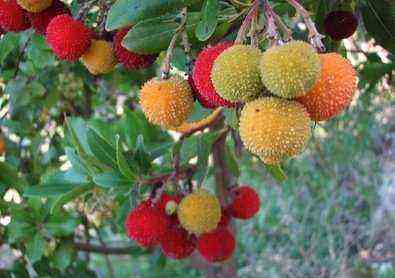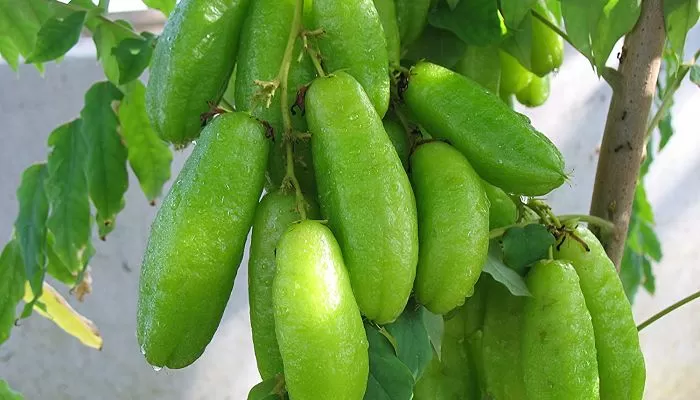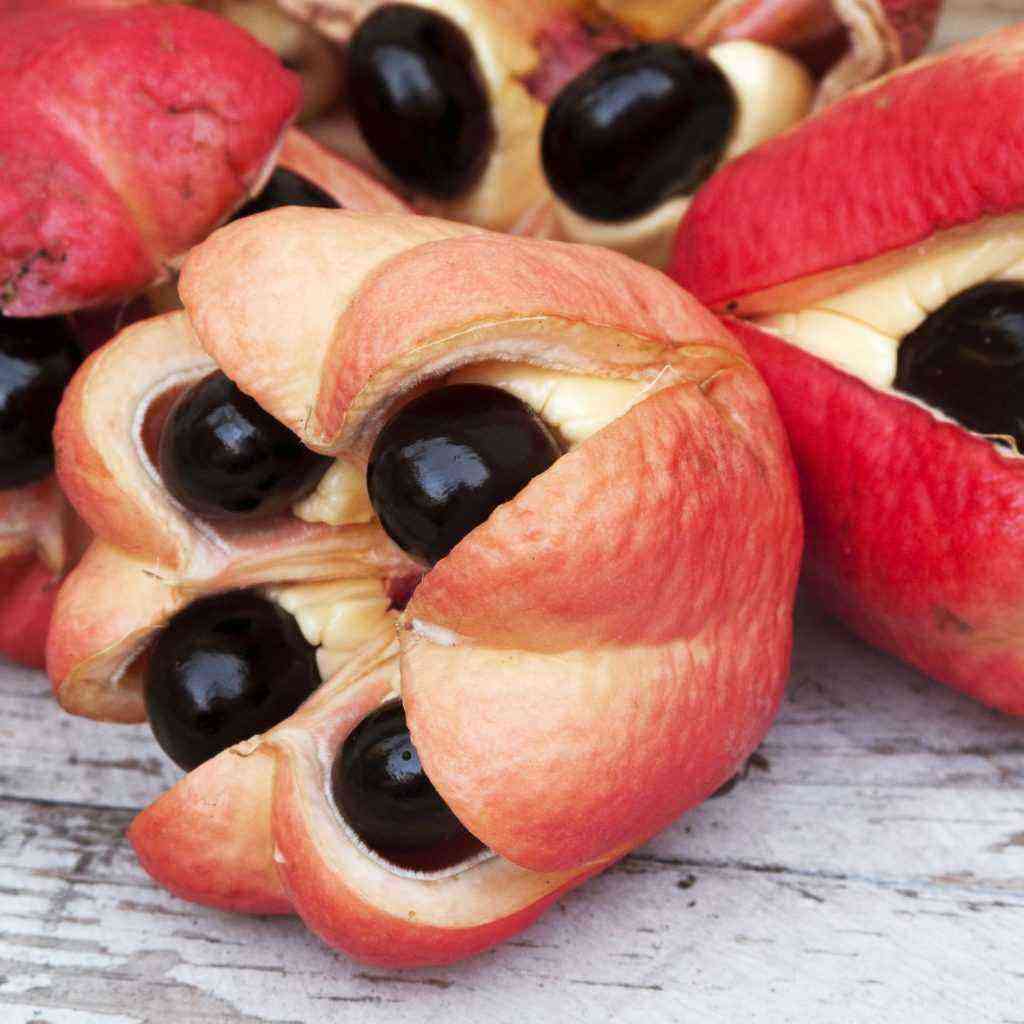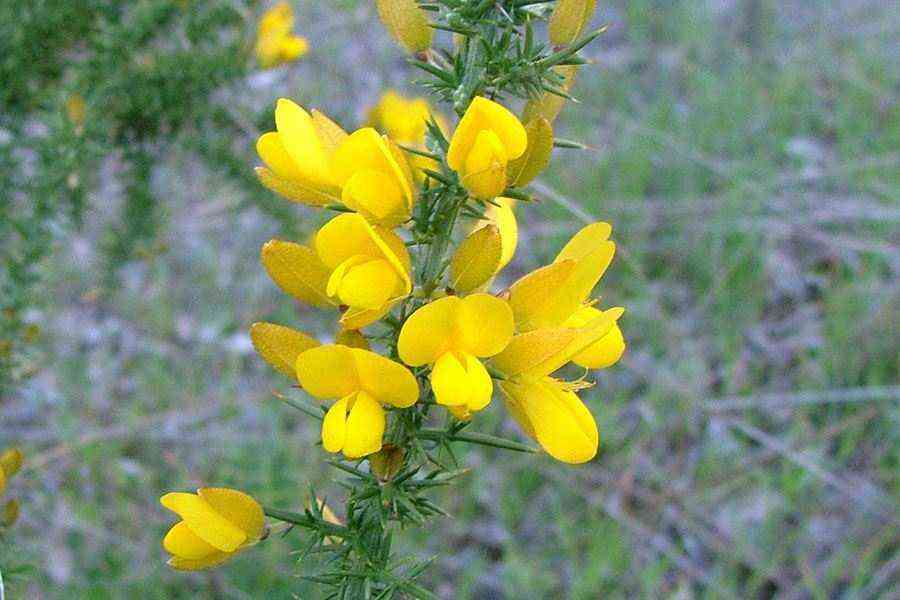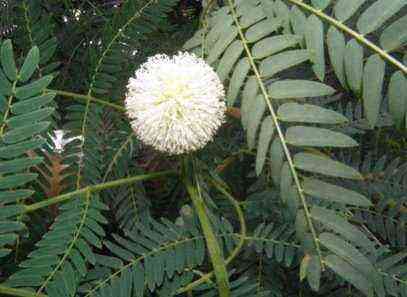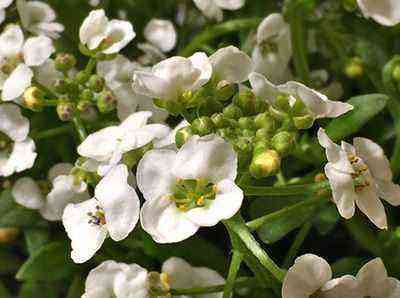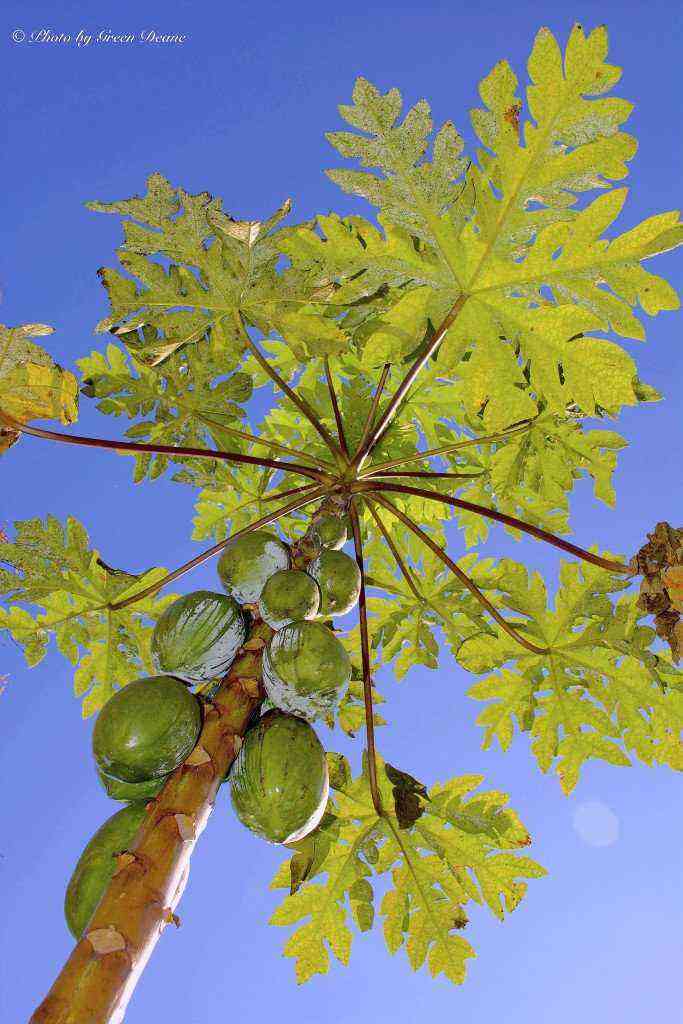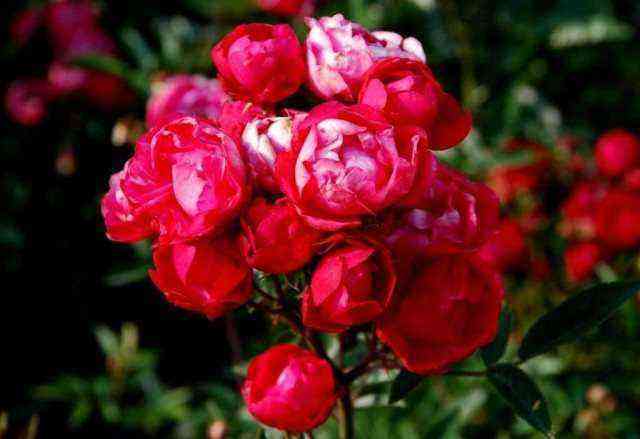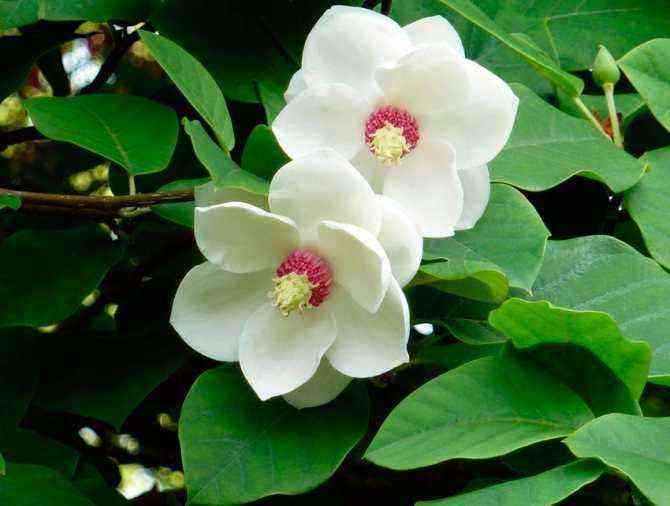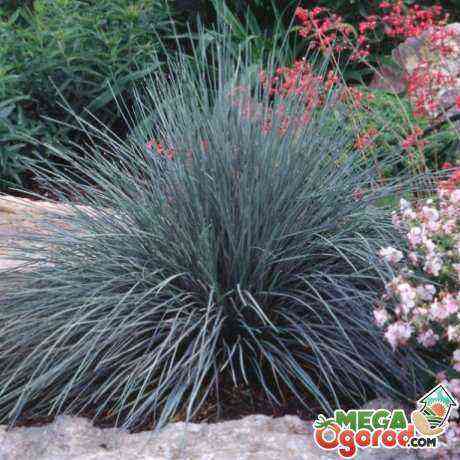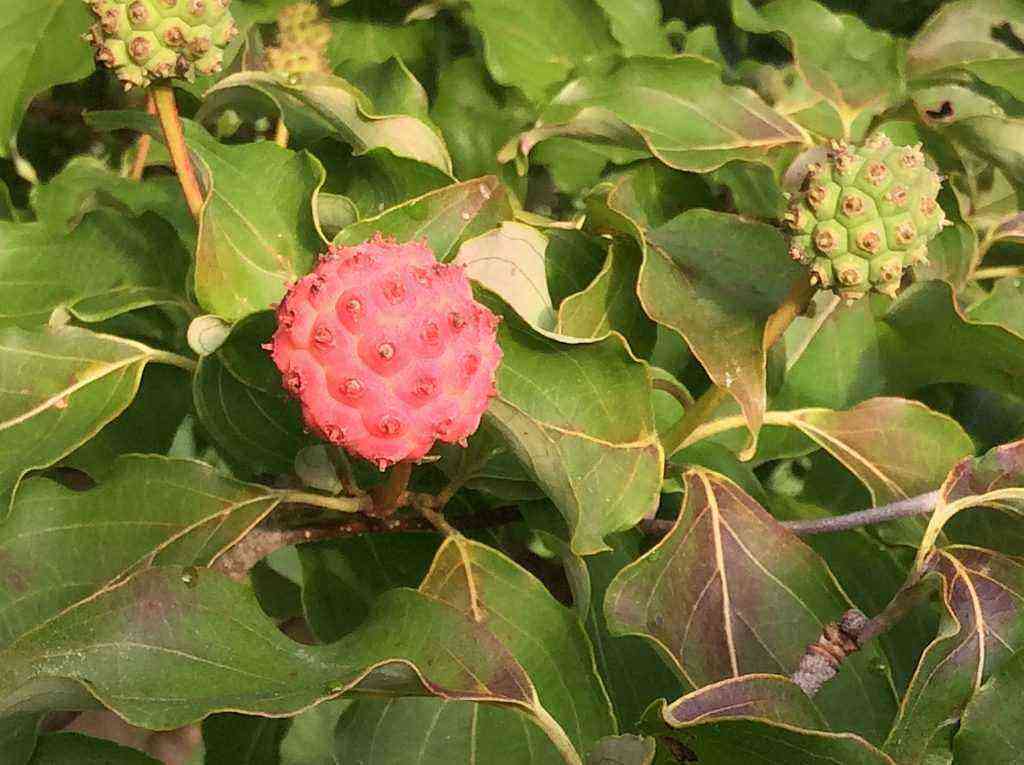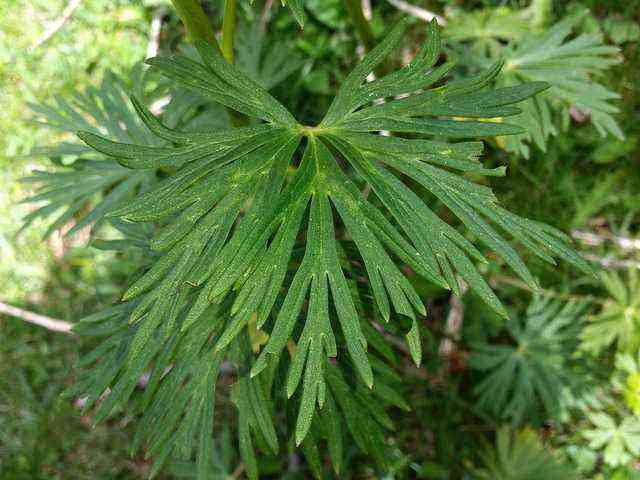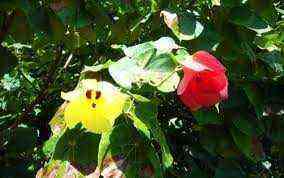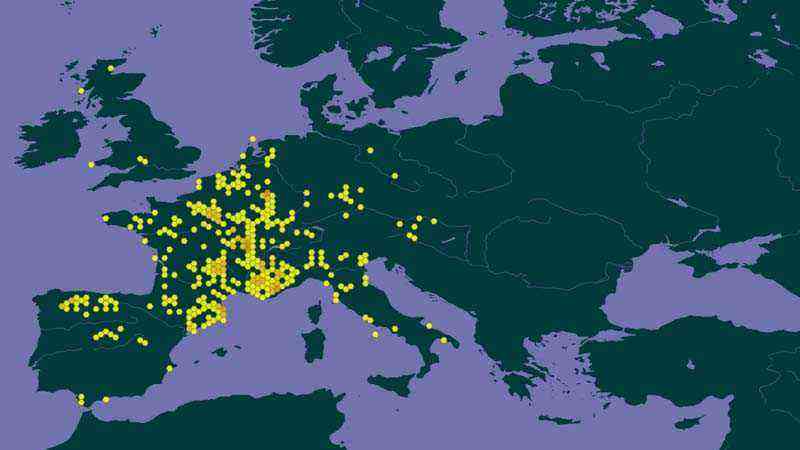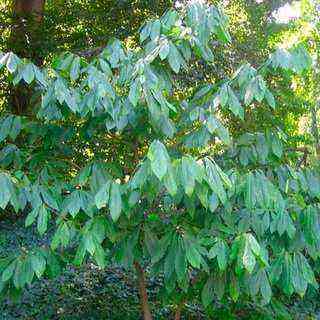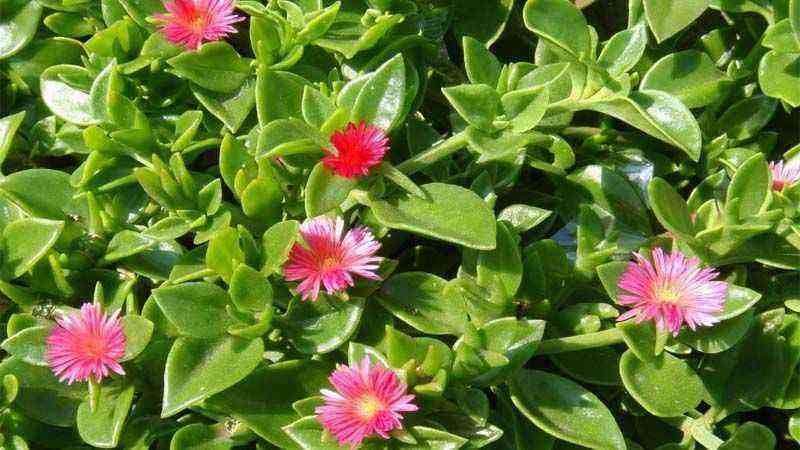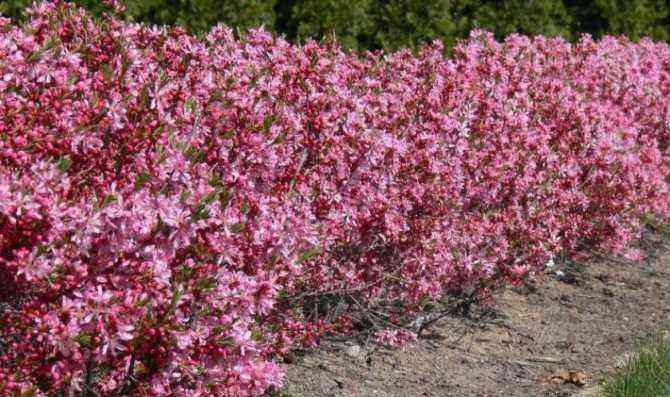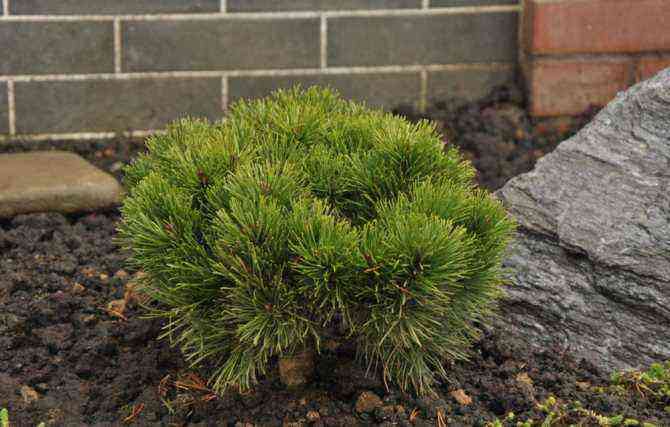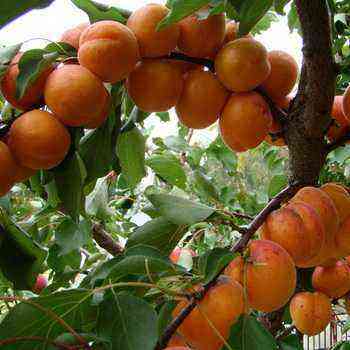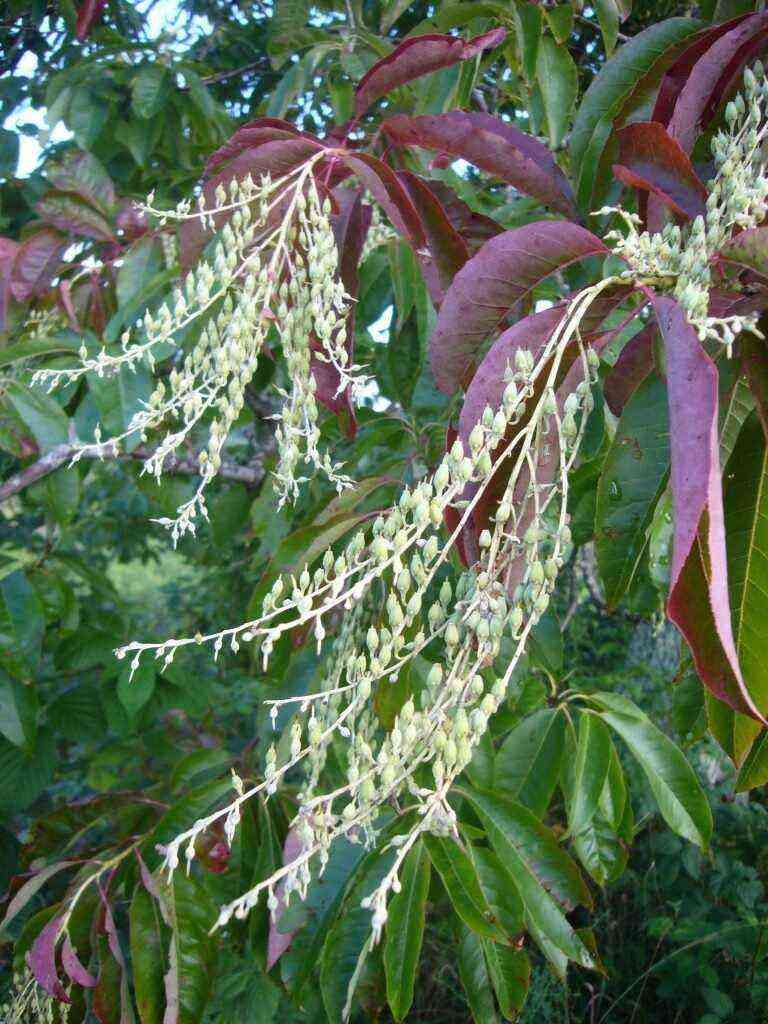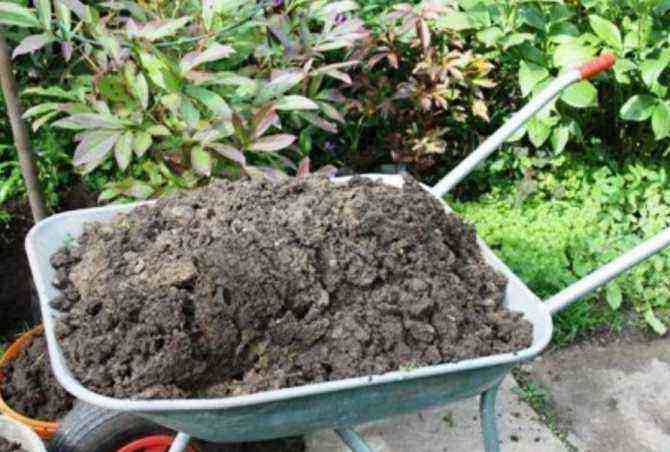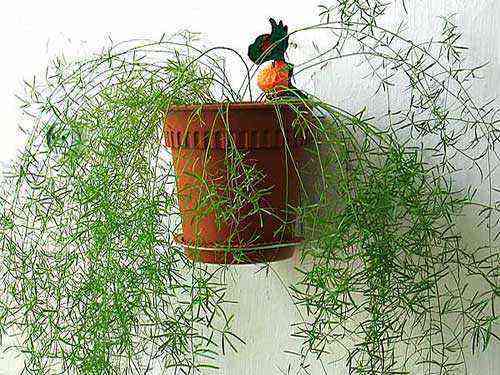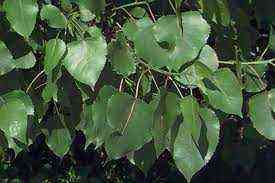When planting a cherry seedling, the root collar must not be buried.
When the water is absorbed and the earth settles a little, the seedling is tied to a peg with a figure-eight. The loop is made moderately free so that later the strapping material does not squeeze the wood.
Immediately after planting, the seedling is cut at a height of 1 m.In the next season, lateral shoots will begin to develop from the dormant buds, on which a crop will form in the future. In the fall of the second year, only 3-4 well-located and well-developed skeletal branches are left on the tree and cut them by 1/3. And the central conductor (the longest vertical shoot) is cut at a height of 80-100 cm from the first (lowest) tier of branches. Thus, the second tier of branches is laid. Subsequently, 2-3 well-developed and well-located shoots are left on it. The remaining branches are cut out, and the central conductor is again shortened at a height of 80-100 cm from the branches of the second tier. A year later, the third (last) tier is laid, consisting of 1-2 branches.
Cherry shaping scheme
Cherry does not tolerate the neighborhood with weeds, therefore, until late autumn, the trunks are regularly weeded. It is also important to provide the plant with timely, but moderate watering, since even a short-term stagnation of moisture can destroy a fragile seedling.
In order for a young tree to overwinter safely, in September it needs to be fed with phosphorus fertilizer (1-40 g of granulated superphosphate are added per 60 sq. M.).
Sweet cherry is a thermophilic culture. Therefore, before planting it on your site, choose the right variety wisely. Only trees of winter-hardy varieties can withstand the cool and unpredictable weather of the middle lane.
Plum: planting and step by step care
Correct planting of plums – 60% of growing success. The drain needs a sunny, draft-free place. Plum does not tolerate drought well, as well as the proximity of groundwater. Plum does not grow on swampy areas, peat bogs, sandy and acidic soils.
How to plant a plum
- Put the roots in a bucket of water for a day.
- Plum can be planted in the fall for a month and a half before the soil freezes and in the spring before bud break. Planting a plum with leaves is doomed to failure – it will not take root.
- The distance to the nearest tree is 3 m.
- The planting hole should be 50 cm deep and 70 cm in diameter.
- Filling mixture for the pit: fertile soil, 15-20 kg of humus, 200 g of ammonium nitrate, 2 kg of coarse sand, 500 g of superphosphate, 300 g of potassium chloride, 400 g of lime, 1-2 kg of crushed stone.
- The seedling is placed on the filling mixture, the roots are straightened and sprinkled with earth without fertilizers.
- Water abundantly.
How to feed the plum
In the spring, the plum is fertilized with urea (carbamide) or ammonium nitrate at the rate of 20 g per square meter of the crown projection. You can also dig in manure – 5-10 kg. A good effect is given by watering with a solution of bird droppings or mullein (3-4 buckets under a tree), especially before flowering. After setting the fruits, feeding with organic matter or mineral fertilizer is repeated.
From 3 years of age in the fall, 10 kg of manure, 300-500 g of superphosphate, 200 g of potassium chloride and 1 kg of ash are buried under the drain.
Autumn feeding of plums promotes better ripening of young shoots, increases resistance to frost, and increases the yield. When the tree comes into full fruiting, organic matter will need more – 20 kg per m2. At the same time, the rate of application of mineral fertilizers is not changed.
Nitrogen deficiency leads to sparse flowering and a decrease in fruit, and the leaves become light green.
The situation will be corrected by spraying with urea (50 g per 10 l of water) or ammonium nitrate (20 g per bucket of water).
An excess of this element becomes the cause of the rapid growth of branches, which do not have time to ripen before the cold weather. As a result, the plum freezes in winter.
With a lack of potassium, the leaves curl up, change their color to brown. It is necessary to add 40 g per m2 of potassium magnesium.
Weak growth, grayish color of leaves, their premature shedding in autumn, small fruits are signs of phosphorus deficiency. In the fall, you need to add superphosphate with humus, as described above. If the upper leaves turn yellow, then the plum does not have enough iron. Must be sprayed with chelated fertilizer.
Plum bears fruit more abundantly if other varieties of plums grow in the neighborhood. She often freezes, and during spring return frosts, bouquet twigs are greatly affected. Therefore, frost-resistant late varieties are advised to plant.
How to cut a plum
The first 4 years the plum gives strong growth. Sometimes up to 2 meters. Intensive growth of shoots is restrained by annual summer pinching and spring pruning by 1/3. Otherwise, an ankle crown with fruits on the tips of the branches will form.
After 10 years, the yield of the plum decreases – rejuvenating pruning is necessary. It is carried out before bud break. Plum bears fruit for a maximum of 30 years.
After this period, even anti-aging pruning will not help. Plant new trees well in advance. The seedling begins to bear fruit in 4-5 years.
Plum farming tips
In winter, snow is trampled around the trunk to prevent the roots from freezing and underpinning them. The frequency of fruiting of plums can be eliminated if, after setting the fruits, they are thinned (there should be a distance of 5-7 cm between the fruits).
This technique will also make it possible to get larger fruits, to avoid overloading the tree with the harvest. And the branches will not break under the weight of the fruit. It is important to remove root shoots. They greatly weaken the mother plant.
In dry summers, the plum must be watered well at least once a week. To retain moisture, you can mulch the root circle.
And in the fall, it is necessary to carry out pre-winter water charging. The ground must be saturated with moisture at least 50 cm.
When and how to prune cherries in autumn
Pruning fruit trees is an integral part of caring for them, so every gardener should be aware of the peculiarities of performing this procedure in accordance with a specific season. This article will discuss the autumn pruning of cherries, and what exactly is worth remembering about the nuances of its implementation, taking into account the age of the tree – more on that later.
Why do you need autumn pruning
In comparison with other types of fruit trees, sweet cherry berries are formed only on annual growths and bouquet branches, differing in high rates of bud formation in the spring and a low tendency to branching. Because of this, it is advisable to form the crown of the plant according to the tiered type, and in the future to carry out regular sanitary and anti-aging pruning.
With the systematic implementation of the procedure, the vegetative mass of the tree will not become too dense, which means that all branches will be equally provided with sufficient sunlight and good ventilation, which is an excellent prevention of infections and pests.
- The general benefits of proper and regular pruning include:
- prevention of ailments (especially of fungal origin);
- prevention of the appearance of pests;
- correct formation of the plant stem;
- increase in productivity indicators;
- the formation of immunity and increased resistance to freezing.
Optimal timing for autumn pruning
The first thing to decide before pruning cherries is when exactly it is better to start completing the task so that there will be a good harvest in the future. Usually, the shortening of the shoots of a cherry seedling begins in the second year after planting it on the site.
The first post-planting pruning: a – before pruning; b – after trimming; c – Reaction of a newly planted cherry tree to pruning after the start of the growing season.
In autumn, it is carried out from September to November, selecting specific dates in accordance with the climatic features of the area. The warmer it is in a specific region of cherry growing, the later you can start performing the procedure, but the main condition is the complete fall of the foliage.
This phenomenon indicates the end of the process of sap flow inside the shoots, which means that the loss of some of them will be much easier for the tree to endure. The ideal time for pruning is a dry and sunny day, but you need to finish the procedure before the first frost, otherwise the cuts will not have time to drag on and the shoots will freeze.
What you need to trim
Modern gardeners use a variety of tools to remove branches, the main of which are the following:
Regardless of what kind of tool fell into your hands, it should be well sharpened and free of rust, which will save the tree from unnecessary injuries. After working with blunt tools, the cuts are uneven, with a torn surface, through which pathogens easily penetrate into the tissues of the plant.
Pruning Differences
Throughout the life of a cherry, gardeners perform several main types of pruning: formative, sanitary and rejuvenating, but the choice of the appropriate option will depend on the age of the plant and the state of its crown at each separate stage.
Pruning young cherries
Formative shortening of a young tree begins in the second year after planting a seedling on the site and is subsequently carried out annually, when the plant reaches five or six years of age. Correct implementation of the procedure ensures uniform growth of shoots, preventing them from tangling and thickening of the crown.
If we are talking about a one-year-old seedling, then after completing the procedure, one can hope for an increase in the number of branches located at the bottom, while simultaneously reducing the growth rate of the rest, due to which it is possible to obtain a correct spherical and highly productive crown.
After the first formative pruning, about five skeletal branches should remain on the annual plant, and three of them are usually placed on the second tier, and on the third, no more than a couple of pieces remain.
The distance between adjacent tiers is maintained in the aisles of 0,6–0,7 m, although between the second and third tiers this value can be reduced to 0,5 m. The next year, when the procedure is repeated, any growth located in the standard area must be removed.
The final stage of the formative pruning of cherries will be the finishing procedure for 5-6 years of plant life. In this case, improperly growing shoots are to be removed, which, being located towards the inside of the crown, interfere with the full development of the entire cherry. In addition, pruning of other branches is possible – in order to thin out the crown.
Video: shaping an annual tree
Pruning of fruit trees
Most sweet cherry varieties become fruitful only by the 5-6 year of cultivation, after which the main goal of shoot removal will be to maintain the tree height at the level of 3-3,5 m, with a maximum height of skeletal branches within 4 m.
From this moment, the formative pruning of the plant is stopped for about 5 years, in the autumn, only diseased and damaged shoots that thicken the crown are removed. After a five-year period, the cherry fruits become smaller, and the fruiting itself will shift closer to the peripheral part of the crown.
This will be the main signal for the rejuvenation of the tree, the pruning of which is postponed to the next February or March (sometimes autumn rejuvenating events are also held).
Pruning old
Often, sweet cherry trees are considered old, the age of which exceeds a ten-year mark. All of them are no longer distinguished by their former productivity, so the gardener is interested in rejuvenating pruning of shoots, especially since with the correct procedure, the harvesting process is also facilitated.
To reduce the crown height, skeletal and semi-skeletal shoots are greatly shortened, at the same time removing parts of large and smaller thickening branches inside the crown.
Such actions will contribute to the movement of fruiting into the tree, and shortening the strong branches will cause additional branching and increased growth of annual shoots. The result of the actions performed will become clearly visible next year, in the spring.
What to do after pruning
After pruning, it is advisable that all wounds received by the tree heal as quickly as possible, therefore, the care of cherries during this period should be special. First of all, gardeners treat the places of the cuts with a special putty or garden varnish, applying them to the tree with a large brush or a toothbrush.
After that, the plant’s near-stem circle is cleaned, destroying leaves and other debris on which pathogens or pest larvae may remain. At the end of the process, you should dig up the soil of the trunk circle, deepening the shovel by at least 15 cm.
After the planned water-charging irrigation (at least 10 liters of liquid per 1 m²), you can additionally spill the substrate with a XNUMX% urea solution, which will also serve as the prevention of possible diseases or pest attacks.
As for the winter shelter of cherries, adult plants usually do not need it, although if a particular growing region is characterized by little snow and very frosty winters, then mulching the trunk circle with straw or spruce branches will not hurt.
Young plants are protected from cold weather with agrofibre or burlap, and so that the bark is not damaged by rodents, it is recommended to whitewash the trunks with lime (if necessary, they are additionally wrapped with a fine mesh).
Experienced gardening tips
Unfortunately, even having chosen the most suitable scheme for autumn pruning of cherries and knowing how to correctly perform the procedure, novice gardeners are not immune from possible mistakes.
Therefore, in order to reduce the likelihood of unpleasant situations, it is worth considering the recommendations of professionals:
- stone fruit cultures cannot be cut immediately “into a ring”, as this often causes gum flow and the bark will not be able to quickly tighten the wound (on the contrary, the surface layer of the tree will begin to move away from the wood and over time it will be necessary to cut the skeletal branch to the place of the wrong cut);
- it is better not to remove living branches in the fall, except in cases where the formative pruning was not performed in the spring, and the tree itself grows in regions with a warm climate;
- pruning is worth a few months before the expected frost, so that the plant has time to recover to the cold;
- in addition to improperly growing shoots, it is worth removing sharp forks of branches.
Since most of the standard cherry varieties are tall plants with fast growth dynamics, pruning in spring will promote the formation of young growth and lower yields, so it is advisable to prune in the fall, after harvesting.
For those new to horticulture, pruning sweet cherries can really seem like a pretty daunting task, but that’s only at first glance. Taking into account all the recommendations of professionals, the main actions will eventually reach automatism and the question of how to make the cherry crown well-groomed, while increasing the tree’s yield, will no longer be so relevant.
